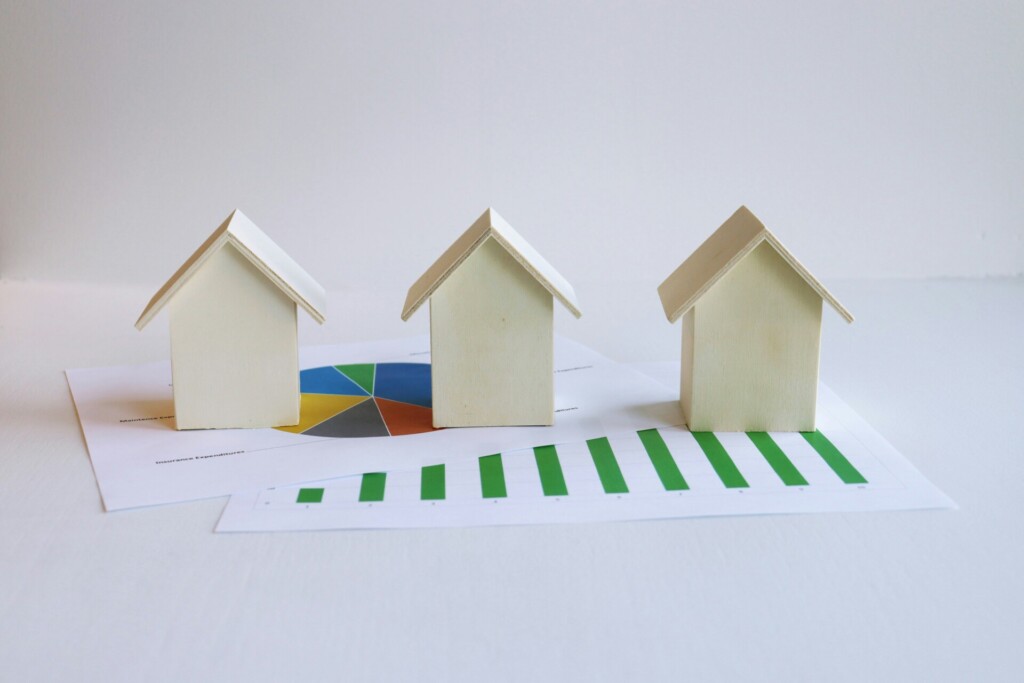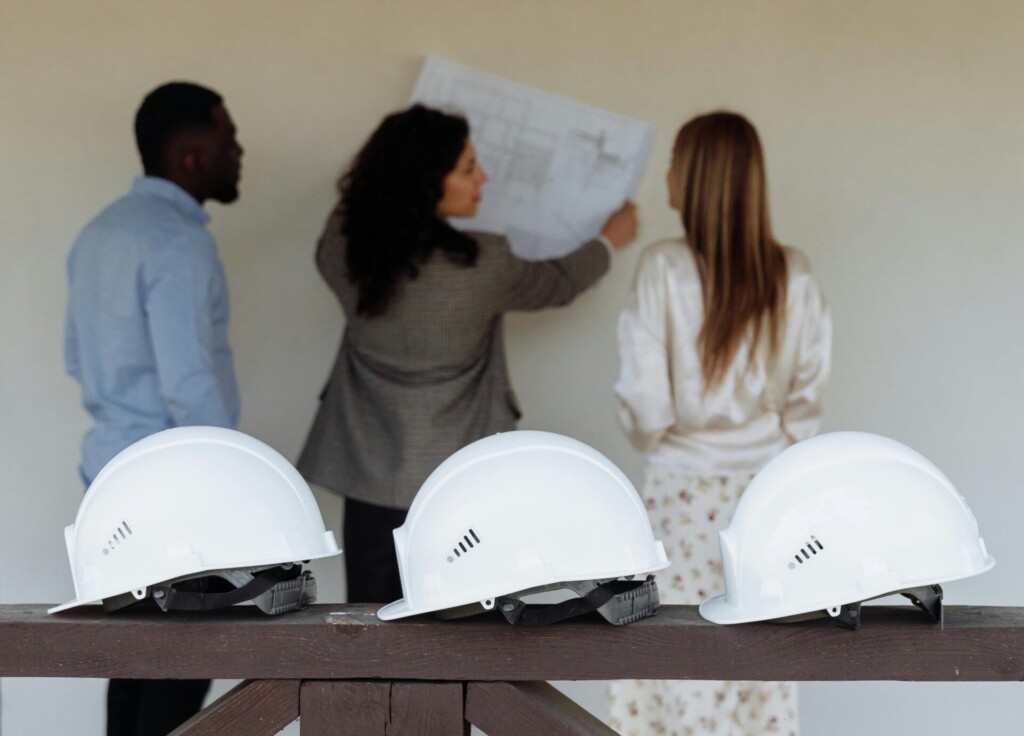Construction cost for building reflects every dollar we spend to construct a project from groundbreaking to final inspection. This total cost encompasses the contract price, approved changes, construction management fees, and applicable taxes on the work itself.
Hard construction costs dominate the budget at more than 60% of total development costs. Recent industry data places average new home construction near $195 per square foot when general contractor fees are included. These costs vary significantly by building type and geographic location, creating the need for location-specific budgeting approaches in our construction planning.
How Do Pros Estimate Construction Cost During Design And Preconstruction?

We approach construction cost estimating with structured formats and methods that match the level of design information available. The accuracy of our estimates improves as project details become more defined, allowing us to move from rough order of magnitude numbers to precise bid-level projections.
Standard Estimating Formats
Two primary systems organize how we present construction cost information. Uniformat II groups costs by building systems and assemblies rather than trade divisions. This elemental costing approach works well during early design phases when we need to evaluate system-level trade-offs between foundation options, structural approaches, or envelope strategies.
We use Uniformat II categories like A10 Foundations, B20 Exterior Enclosure, and D30 HVAC to organize costs by function. This systems estimate format helps developers and property owners understand how design decisions affect major building components before detailed specifications exist.
MasterFormat organizes information by construction trades and supplier categories. We apply this format when preparing detailed estimates for bidding and construction administration. Trade packages align with Division 03 Concrete, Division 04 Masonry, Division 26 Electrical, and other CSI divisions that contractors use for pricing and payment applications.
The two formats cross-reference through standard tables, allowing us to transition from early elemental costing to detailed trade-based estimates as design development progresses.
Three Core Estimating Methods
Analogous estimating draws from previous project costs when minimal information exists. We might reference a recently completed office building to provide rough guidance on a similar facility. This top-down method delivers fast results but carries high uncertainty. We limit analogous estimates to preliminary discussions and early feasibility studies.
Parametric estimating applies unit costs to measured quantities from design drawings. Common parameters include cost per square foot for floor area, cost per linear foot for utilities, or cost per fixture for plumbing systems. Accuracy improves as we refine measurements and apply more specific unit rates to individual building components.
We develop parametric estimates throughout schematic design and design development phases. The method balances speed with reasonable accuracy when design details support reliable quantity takeoffs.
Bottom-up estimating analyzes construction requirements in detail through comprehensive material and labor takeoffs. We quantify every component by trade division, apply current market pricing, and aggregate costs upward. This method produces the most accurate results but requires substantial effort and nearly complete construction documents.
General contractors and major trade contractors use bottom-up methods for competitive bidding. We apply this approach for final pre-tender estimates and construction cost validation.
Estimate Classes And Accuracy Ranges
We align estimate accuracy expectations with project phases through established classification systems. Class D estimates occur during functional programming with accuracy ranges of ±20 to 30 percent. These rough order of magnitude projections help establish initial project budgets.
Class C estimates accompany schematic design deliverables with ±15 to 20 percent accuracy. We can provide more reliable projections as building size, major systems, and performance requirements become defined.
Class B estimates support design development phases with ±10 to 15 percent accuracy ranges. Improved specifications for structural systems, MEP design, and finish selections allow tighter cost projections.
Class A estimates occur near bid document completion with ±5 to 10 percent accuracy. These detailed projections closely approximate actual contractor pricing when market conditions remain stable.
Contingency Planning Throughout Design
Contingency allowances account for scope evolution, market changes, and unforeseen conditions. We typically start with 20 to 25 percent contingency during early programming and feasibility studies.
Contingencies decrease as design information improves and project risks become better defined. By schematic design, we often reduce contingencies to 15 to 20 percent. Design development estimates may carry 10 to 15 percent contingency allowances.
Final pre-tender estimates typically include 5 to 10 percent contingency for market conditions and minor scope adjustments. Construction phase contingencies remain separate from design phase allowances and address field conditions and change orders.
We document contingency assumptions clearly and adjust allowances based on project complexity, site conditions, schedule constraints, and market volatility. Regular contingency reviews ensure appropriate risk management throughout design and preconstruction phases.
What Drives Construction Cost For Building Up Or Down?
Construction costs fluctuate based on complex interactions between economic forces, project-specific factors, and regulatory environments. We track these variables closely during preconstruction planning to identify budget impacts early and adjust our estimates accordingly.
Economic And Market Forces
Inflation affects material pricing, labor rates, and equipment costs simultaneously. During periods of high demand, we see bid prices rise as contractors compete for limited skilled trades. Labor market conditions particularly influence our scheduling decisions, as tight markets drive up wages and extend project timelines.
Materials prices shift with global supply chains and commodity markets. Steel prices respond to international trade policies, while lumber costs fluctuate with housing demand cycles. We monitor construction price index trends to anticipate these movements and advise clients on timing strategies.
Site-Specific Challenges
Topography determines excavation requirements and foundation complexity. Poor soil conditions require specialized geotechnical solutions, while contaminated sites demand environmental remediation before construction begins. Adjacent buildings create access constraints that increase labor costs and equipment rental periods.
Climate conditions affect construction methods and material selection. Winter work requires temporary heating, extended cure times for concrete, and weather protection systems. Remote locations increase material transportation costs and limit our contractor pool, driving up both supply and labor expenses.
Building Design And Construction Type
Structural system selection creates significant cost variations. Wood framing offers the lowest material costs but limits building height and span capabilities. Steel and concrete construction (Type I) adds substantial expense but enables multi-story projects and longer spans required for commercial applications.
Building compactness affects the cost per square foot through perimeter-to-area ratios. Complex geometries increase formwork requirements, structural connections, and weatherproofing details. MEP systems become more expensive as buildings grow taller due to increased vertical distribution requirements and larger equipment sizes.
Finish levels drive interior costs dramatically. Basic commercial finishes might add $30 per square foot, while high-end specifications can exceed $150 per square foot. We help clients balance aesthetic goals with budget constraints through value engineering during design development.
Regional Cost Differences
Regional variations create substantial budget impacts across markets. Bay Area projects average about $81 per square foot higher in hard costs compared to other California regions, while Los Angeles projects run approximately $35 per square foot above state averages.
Prevailing wage requirements add roughly $30 per square foot to hard costs on public projects. Type I construction systems typically cost $65 to $71 per square foot more than lighter framing methods. These differentials help us calibrate estimates based on project location and delivery method.
Delivery Method And Process Risks
Procurement approach affects contractor pricing strategies. Design-bid-build projects often carry higher contingencies due to incomplete information during bidding. Design-build delivery can reduce costs through early contractor involvement but requires careful scope definition.
Permitting timelines create escalation risks and carrying costs. Long approval processes force us to build larger contingencies and escalation clauses into our estimates. We work with clients to streamline approvals where possible, reducing both risk premiums and project duration.
Insurance and bonding requirements vary by project size and owner type. Complex projects with extensive bonding requirements increase contractor overhead, while specialized insurance coverage adds direct costs to the project budget.
What Does A Typical Construction Cost Breakdown Look Like?

When we analyze project budgets, specific patterns emerge across residential construction. Interior finishes dominate the largest share at approximately 29% of hard costs, followed by framing at 18% and major systems at 14%. These percentages provide developers and property owners with realistic expectations for budget allocation.
The construction cost breakdown within hard costs shows consistent patterns. Exterior finishes account for roughly 14%, while foundation work represents 11% of the total. Site work and final steps each claim about 7% of the budget, completing the primary cost categories we track on residential projects.
Labor, Materials, And Equipment Distribution
Across projects, we see labor costs typically range from 20% to 40% of total construction expenses. This variance depends heavily on trade complexity and local wage rates. Materials consistently represent 30% to 40% of costs, while equipment expenses usually fall between 5% and 10%.
The relationship between labor and materials shifts based on construction type. Residential projects often lean toward higher material percentages, especially when prefabricated components reduce on-site labor requirements. Commercial builds typically show higher labor ratios due to specialized systems and complex coordination needs.
Additional Cost Categories
Beyond the primary hard costs, detailed budgets include several supporting elements. Preliminaries cover site setup, temporary facilities, and project management infrastructure. Design and engineering fees encompass architectural services, structural calculations, and MEP system design. Scaffolding represents a significant allowance on multi-story projects.
Notable allowances appear throughout construction budgets. These cover items like permit fees, utility connections, and inspection costs. We coordinate these elements early in preconstruction to avoid budget surprises during active construction phases.
Contingency Planning Across Project Phases
Contingencies require careful calibration throughout the construction process. We start with higher percentages during early design phases, often reaching 25% when project scope remains fluid. As design development progresses and construction documents finalize, contingencies typically reduce to 2% to 5%.
The contingency reduction reflects improved cost certainty as project details crystallize. Foundation conditions become known after geotechnical investigation. Material selections finalize through value engineering sessions. Trade contractor pricing firms up through competitive bidding processes.
These cost breakdown patterns vary significantly by building type, geographic location, and project specifications. High-end residential projects show higher interior finish percentages, while basic construction emphasizes structural elements. Regional labor markets, material availability, and local building codes all influence the final distribution of costs across categories.
What Benchmarks And Ranges Help Set Realistic Budgets?
Construction budgets start with solid benchmarks. Recent data shows that new home construction averages approximately $195 per square foot when general contractor fees are included, excluding land costs. This national baseline provides a starting point for early project discussions, though actual costs can vary dramatically based on location and project specifics.
We use this figure as our foundation when working with developers and property owners during initial feasibility studies. The $195 per square foot represents comprehensive hard costs plus our overhead and profit, giving stakeholders a realistic picture of what to expect nationwide.
State Cost Variations Create Wide Budget Ranges
Geographic location drives significant cost differences across states. Hawaii leads with approximately $230 per square foot, followed closely by Alaska at $228 per square foot. High-cost markets like California and New Jersey average around $225 per square foot, while New York reaches $211 per square foot and Massachusetts hits $210 per square foot.
Mid-range markets provide more moderate pricing. Colorado averages roughly $172 per square foot, while Texas comes in at about $162 per square foot. These states offer balanced cost structures without sacrificing construction quality or code compliance.
Lower-cost regions include Oklahoma at approximately $158 per square foot, Arkansas at $156 per square foot, and Mississippi at $154 per square foot. These markets benefit from lower labor costs and material accessibility, though we still maintain the same construction standards regardless of location.
California Market Trends Show Regional Premiums
California presents unique cost challenges within the state itself. Hard costs rose sharply in recent years, with the Bay Area commanding significantly higher prices than other California regions. Los Angeles also shows elevated pricing compared to the state average, reflecting local market conditions and regulatory requirements.
We track these regional variations carefully when preparing estimates for California projects. The difference between Sacramento and San Francisco can be substantial, requiring location-specific adjustments to our base pricing models. Labor availability and permit complexity contribute to these regional premiums.
Practical Budgeting Steps For Accurate Estimates
Effective budget planning requires systematic approaches to cost indexing and timing. We use indexing to adjust historical data by location and date, ensuring estimates reflect current market conditions. Every estimate carries a clear reference date to establish pricing validity and track market changes.
Explicit escalation factors appear in all our estimates beyond six months out. Construction price index movements can significantly impact project costs, particularly for materials like lumber, steel, and concrete. We monitor these indices regularly and adjust our pricing accordingly.
Budget updates occur at key project milestones. We revise estimates during schematic design, design development, and pre-bid phases as project details become clearer. This phased approach helps maintain cost certainty while allowing for design evolution and value engineering opportunities.
Reference dates matter more than most developers realize. A six-month-old estimate may no longer reflect current pricing, especially in volatile materials markets. We recommend quarterly estimate updates for projects with extended timelines to maintain budget accuracy and project viability.
Conclusion: Build Cost Certainty With Phased Estimates, Contingencies, And Clear Scope

Cost certainty begins with disciplined front-end planning and evolves through systematic execution. We establish control by validating the functional program before design advances, applying Uniformat II classifications for system-level decisions during early phases, then transitioning to MasterFormat when we prepare bid documents and manage trade packages. Each estimate class serves a specific purpose in this progression, with contingency levels adjusted to match the certainty that comes with design completion.
Regional cost factors, construction type requirements, and wage obligations demand ongoing attention throughout the process. We document escalation assumptions with clear reference dates and update estimates at key milestones to maintain accuracy. When projects require specialized expertise, we engage qualified cost consultants or quantity surveyors to strengthen our analysis. Life cycle costing and value engineering sessions scheduled early in design development help identify opportunities before costly changes become necessary. Streamlining approval processes wherever possible reduces both schedule risk and the premiums that uncertainty brings to contractor pricing.
Connect with EB3 Construction to discuss how our systematic approach to cost control supports your next project.




